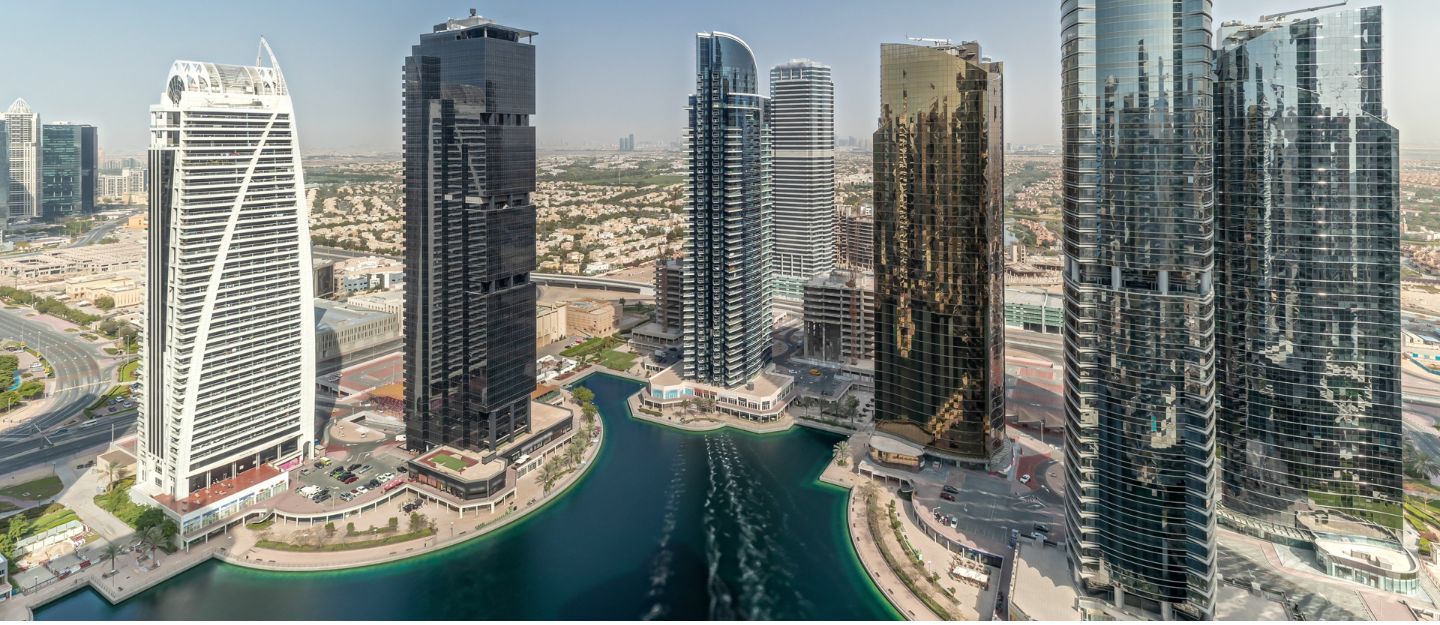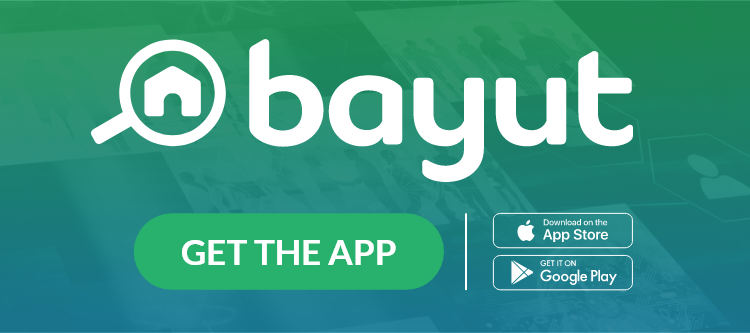All about rent-to-own properties in Dubai
- What are Rent-to-Own Properties
- Rent-to-Own Process
- Rent-to-Own Agreements
- Rent-to-Own vs Lease-to-Own
- Popular Areas
- How to Register
- Benefits for Sellers
Rent-to-own properties in Dubai have emerged as a feasible solution for both homebuyers and sellers. These schemes enable potential buyers to rent a property and transition into ownership over time, without requiring a substantial down payment upfront.
But how does it all work in practice? What makes the rent-to-own process appealing? And are such agreements still relevant? This guide explores everything you need to know about rent-to-own properties in Dubai, from the process and agreements to top tips and how it compares to lease-to-own options.
What are rent-to-own schemes in Dubai?
The rent-to-own model allows a tenant to rent a property with the option to purchase it after a specified period, typically two to three years. During this period, a portion of the rent paid goes towards the eventual purchase of the property.

Dubai rent-to-own projects are designed for buyers who want to take out a mortgage to purchase a property but are facing difficulties making the initial down payment. The UAE’s banking law requires buyers to pay 20% to 25% of the purchase price upfront as the down payment to get a mortgage for a property.
Rent-to-own projects in Dubai are an excellent solution for such buyers. When purchasing a rent-to-own property, 20% – 30% of the purchase price is paid as rent over three to four years, as agreed between the buyer and seller.
At the end of this contract, this paid amount will be considered as the initial down payment on the property, allowing the buyer to complete the sale transaction through mortgage or cash.
How Does the Rent-to-Own Process Work?
Let’s break down the rent-to-own process explained with a real-world example:
- Suppose a property is worth AED 1,000,000.
- The tenant enters into a rent-to-own agreement and pays AED 100,000 annually in rent over three years.
- By the end of three years, the tenant would have paid AED 300,000.
- A pre-agreed percentage of this amount, typically ranging from 80% to 100%, is considered the down payment.
- The remaining amount (after deducting the effective down payment) can then be financed via a mortgage, typically at 70–80% Loan-to-Value (LTV).
The key element in such deals is the Memorandum of Understanding (MoU) between the tenant and landlord. It clearly states how much of the rent contributes to the down payment and outlines the process for the final transfer.
Understanding Rent-to-Own Agreements
A rent-to-own agreement is a formal contract signed between a tenant (who will become the future buyer) and a landlord (the seller). This MoU is often registered with the Dubai Land Department (DLD) and includes:
- Duration of the rent-to-own period
- Percentage of rent contributing to the down payment
- Final purchase price of the property
- Responsibilities of each party during the rental period (e.g. service charges)
During the rent-to-own period, the landlord typically covers service charges until ownership is transferred to the tenant.
Rent-to-own vs Lease-to-own: What’s the difference?
Rent-to-own properties in Dubai do differ slightly from lease-to-own properties. While rent-to-own schemes cover the initial down payment, lease-to-own contracts cover the entire purchase price. As a result, lease-to-own contracts are typically longer, ranging between 7 and 10 years, during which the buyer pays the purchase price in equal instalments.
Another key difference between rent-to-own and lease-to-own schemes is the mortgage. Rent-to-own schemes in Dubai are primarily designed for buyers who wish to secure a mortgage. On the other hand, lease-to-own schemes in Dubai bind the buyer and seller with a Memorandum of Understanding (MOU), meaning that third parties, such as banks, cannot become involved.
For example, a developer might offer a 10-year lease-to-own deal where
you lease the property for AED 100,000 per year. After 10 years of consistent payments, you own the property outright with no additional mortgage required.
This model mirrors the way auto financing works in the car market. While it was popular in the past, particularly with developers like Emaar, it’s less common today due to the fast pace of property sales in Dubai.
However, for larger properties, such as villas, lease-to-own deals can still be negotiated directly with sellers who are open to flexible terms. Keep an eye on off-plan launches—some developers may reintroduce flexible purchase models to attract new buyers.
Where can you find rent-to-own properties in Dubai?
Several developers offer rent-to-own properties in Dubai. Reputed real estate companies, such as Emaar, are also offering these options, while the number of properties for rent-to-own in Dubai South is increasing. Bayut’s portfolio of properties for sale also reveals that notable communities, such as Jumeirah Golf Estates, Al Furjan, JVC, Discovery Gardens, and DIFC, offer rent-to-own options.
You can browse our listings for rent-to-own properties in JVC, a family-friendly suburban community. Alternatively, there are options in rent-to-own properties in Al Furjan, located in the Jebel Ali area.
While Dubai and Abu Dhabi have taken the lead in offering rent-to-own apartments and villas, other emirates, such as Ras Al Khaimah, are also providing these attractive solutions to buyers.
If you are planning to purchase rent-to-own apartments in Dubai, bear in mind that these can be 10% to 15% more expensive than traditional properties for sale.
You can rely on Bayut’s TruBrokers in Dubai to help you find your dream home:
Are buyers treated as tenants or owners when it comes to rent-to-own properties in Dubai?
Buyers will be considered as tenants during the initial contract for the first three or four years. Most developers and sellers prefer to formalise the agreement through a tenancy contract at the Ejari registration centre.

The contract will also mention that these rental payments will be considered against the initial down payment. After this rental term, the purchase will be completed as a normal sale transaction, through mortgage or cash.
However, buyers should bear in mind that it is not possible to sublease a rent-to-own property, as the concept is designed with the buyer as the end-user.
Additionally, in the case of a rent-to-own villa or flats in Dubai, the buyer is considered a tenant, and the seller (or landlord) is responsible for major maintenance works to the property. Meanwhile, the tenant typically takes care of ordinary wear and tear issues. Once the title deed is transferred at the end of the rent-to-own contract period, all charges will then be borne by the new owner.
Landlords can also offer rent-to-own schemes in Dubai to their existing tenants by deciding on the purchase price at the start of the contract and stating that the rental payments will go towards the down payment.
How do rent-to-own properties in Dubai benefit the seller?
There are several benefits for sellers when it comes to rent-to-own properties in Dubai. Firstly, sellers can advertise higher sales prices while offering rent-to-own schemes, in exchange for more flexibility.
Sellers offering rent-to-own schemes in Dubai can also cater to a wider pool of buyers, including those who may not be ready to buy just yet.
Overall, it’s a win-win situation for sellers when it comes to rent-to-own houses in Dubai. Even if the buyer chooses not to buy the property at the end of the rental contract, the seller still benefits from having earned a higher rental income.
FAQs
Is rent-to-own available in Dubai in 2025?
Yes, though less commonly offered than before. They are mostly available through custom arrangements with sellers or in select new off-plan projects in Dubai.
Can I register a rent-to-own agreement with the Dubai Land Department?
Absolutely. These agreements can be registered for a 2% fee, in addition to the MoU.
Can I get a mortgage after the rent-to-own term ends?
Yes. Most banks offer 70–80% LTV, provided you meet their lending criteria at the time of application.
This concludes our guide to rent-to-own properties in Dubai. Special thanks to Mohsin Ayub, Marketing Director at Homes 4 Life Real Estate, for sharing detailed insights on how rent-to-own and lease-to-own property schemes work in Dubai. His practical knowledge and real-world examples greatly contributed to the depth and accuracy of this guide.
This agency also offers comprehensive property management services that cover sales, rental, and maintenance of properties, as well as information about rent-to-own properties in Dubai.
Are you a tenant nearing the end of your contract and wondering if you should consider investing in Dubai real estate? Read up on the most important things to know before tenancy contract renewal in Dubai.
Before you decide on a property to buy, discover the different types of residential properties available in Dubai to find your perfect home.








